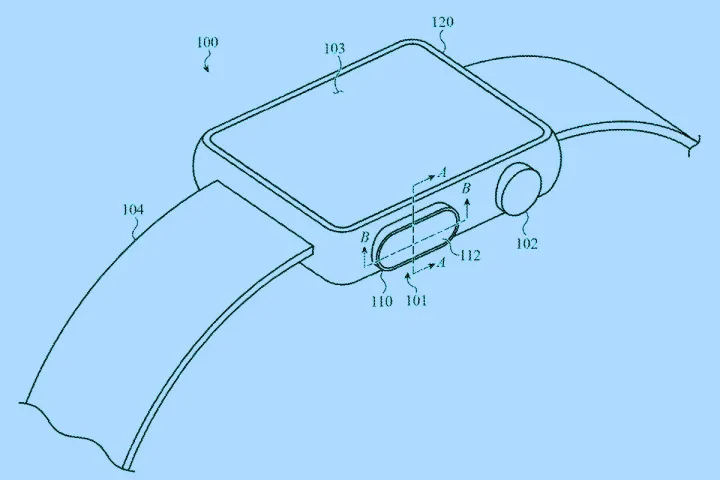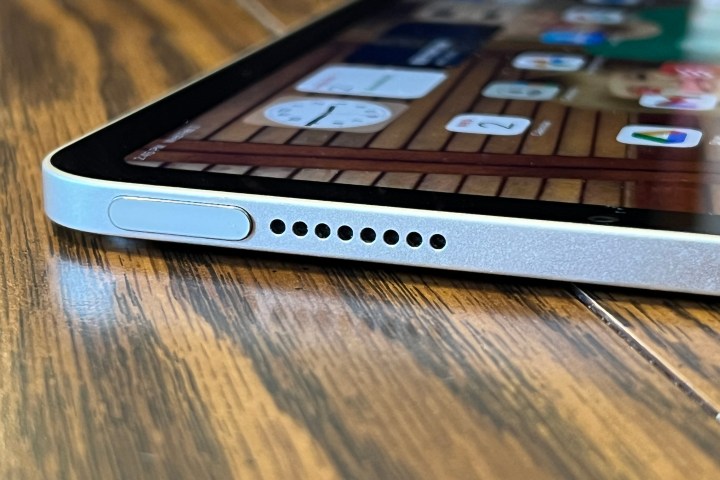If you’ve ever wished for some sort of biometric authentication system on the Apple Watch, you’re not alone. Apple engineers, too, are imagining ways to put the Touch ID fingerprint sensor on the Apple Watch. At least according to a patent application, that is.
Titled “Electronic device having sealed button biometric sensing system,” the patent application filed by Apple describes methods of fitting a fingerprint sensor inside a smartwatch. Aside from discussing the technical aspects and various ways it can come to life, the application describes some of the use case scenarios, as well.

The attached schematic shows a side button that looks identical to the Touch ID power button you’ll find on the iPad Air. The Apple Watch offers enough space on the side to fit a button that size, so the idea doesn’t really sound outlandish. Aside from acting as the power button, tapping on it will also serve as a biometric authentication channel for a variety of tasks.
Interestingly, the patent application imagines putting a fingerprint sensor assembly inside the digital crown. The crown would retain its rotating functionality, while the static portion in the middle will have a Touch ID sensor hidden behind the flat contact surface.
Notably, the patent also talks about using an in-display fingerprint sensor, a solution that is commonplace on Android smartphones. “The display may also provide an input surface for one or more input devices, such as, for example, a touch-sensing device and/or a fingerprint sensor,” reads the proposal.
Why put Touch ID on an Apple Watch?
It might sound like a retrograde move. After all, why would I need to authenticate my fingerprint pattern if all I want to do is see the time? There’s a reason raise-to-wake is a staple on smartwatches, not just those made by Apple. But the patent application, which was published on July 5, goes through a few key benefits.

As per the unsurprisingly jargon-heavy description section, a fingerprint sensor on an Apple Watch can “unlock an electronic device, authorize a transaction, send an alert, and/or enable applications running on the electronic device.” If that sounds vague, let me elaborate on a few of those scenarios.
The Apple Watch is capable of a lot of impressive tasks like taking an electrocardiogram, measuring blood oxygen saturation levels, and making payments among others. Soon, it will be capable of detecting fever, too. In the coming years, it might add noninvasive blood glucose and blood pressure monitoring to, its arsenal, too.
But storage of so much sensitive information, especially intimate personal health and banking details, needs to be secure. For such situations, locking that data behind a layer of biometric security is the right way forward.
Then there is the convenience aspect. You will no longer have to enter a passcode or PIN to authenticate a payment. However, Apple is not the only smartwatch maker that wants to put a biometric authentication system on a snazzy timepiece.
Samsung is having similar dreams
As per a Business Korea report dating all the way back to 2014, Samsung inked a deal with PayPal that aimed at verifying transactions using a fingerprint sensor. Synaptics was reportedly roped in to provide the biometric authentication modules.
Those plans haven’t come to fruition as of 2022. However, the tech was demoed at an event in 2017 on an Android Wear smartwatch. The sensor was positioned on the strap, right next to the screen’s edge for easy access, as you can see in the video above.
In 2018, Patently Mobile reported about a Samsung patent that placed a fingerprint sensor beneath the screen, smack dab in the middle. Again, that system has yet to appear on a Samsung smartwatch, but it did provide a glimpse into a promising future.
Just like those implementations, we’re likely at a similar stage with Touch ID on the Apple Watch. Apple has a patent for the technology and is evidently working on it, but it’s unclear if or when it’ll come to light on an actual product. We certainly hope that happens sooner rather than later, but it’s far too early to know for certain at this stage.



